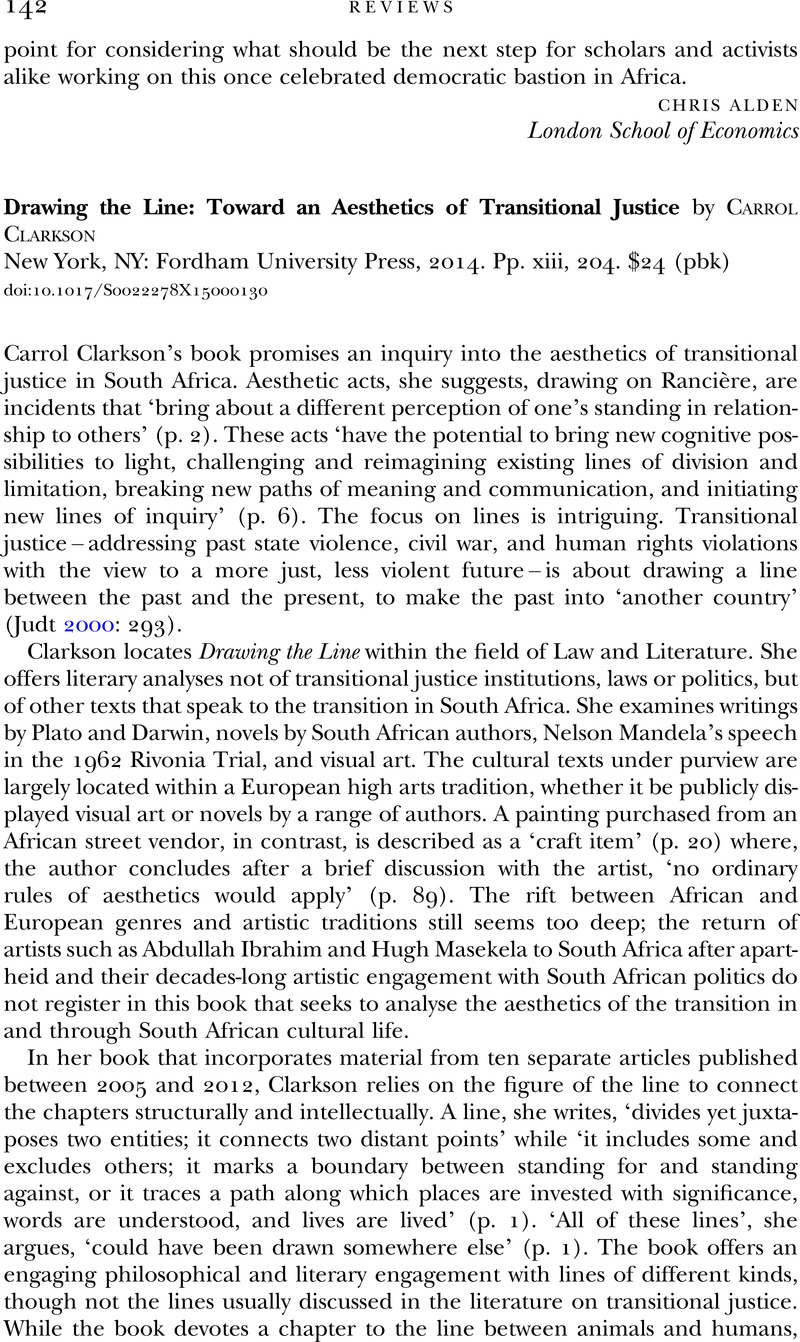No CrossRef data available.
Article contents
Drawing the Line: Toward an Aesthetics of Transitional Justice by Carrol Clarkson New York, NY: Fordham University Press, 2014. Pp. xiii, 204. $24 (pbk)
Published online by Cambridge University Press: 12 February 2015
Abstract
An abstract is not available for this content so a preview has been provided. Please use the Get access link above for information on how to access this content.

- Type
- Reviews
- Information
- Copyright
- Copyright © Cambridge University Press 2015
References
REFERENCES
Cole, C. 2010. Performing South Africa's Truth Commission: stages of transition. Bloomington, IN: Indiana University Press.Google Scholar
Jeynes, W.H. 2011. ‘Race, racism, and Darwinism’, Education and Urban Society 43: 535–59.Google Scholar
Judt, T. 2000. ‘The past is another country: myth and memory in postwar Europe’, in Deák, I., Gross, J.T. & Judt, T. (eds). The Politics of Retribution in Europe: World War II and its aftermath. Princeton, NJ: Princeton University Press, 293–323.Google Scholar
Jung, C. 2000. Then I Was Black: South African political identities in transition. New Haven, CT: Yale University Press.Google Scholar
Park, Y.J. 2011. ‘Black, yellow, (honorary) white or just plain South African? Chinese South Africans, identity and affirmative action’, Transformation: Critical Perspectives on Southern Africa 77: 107–21.Google Scholar
Wilson, R. 2002. The Politics of Truth and Reconciliation in South Africa: legitimizing the post-apartheid state. Cambridge: Cambridge University Press.Google Scholar


